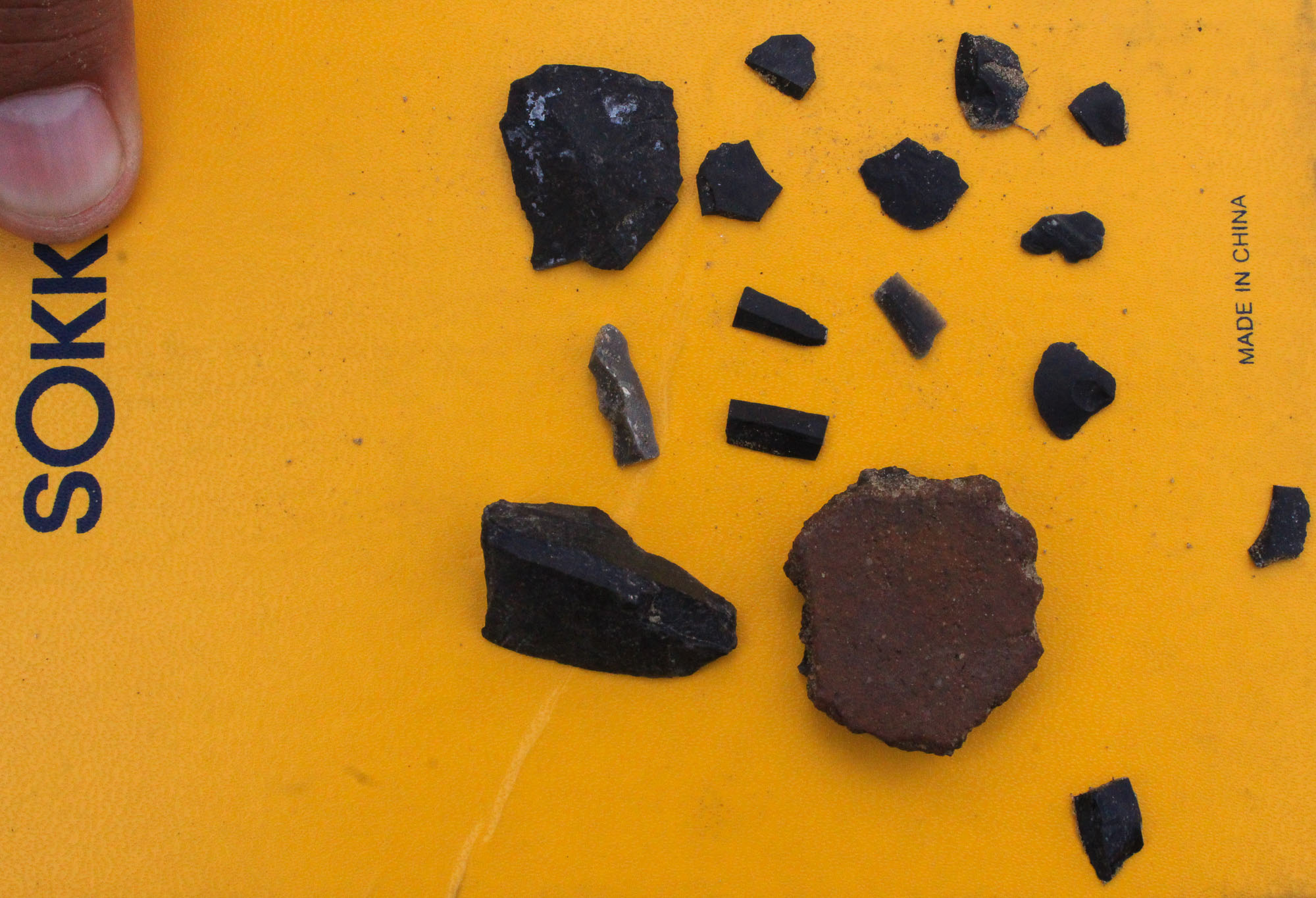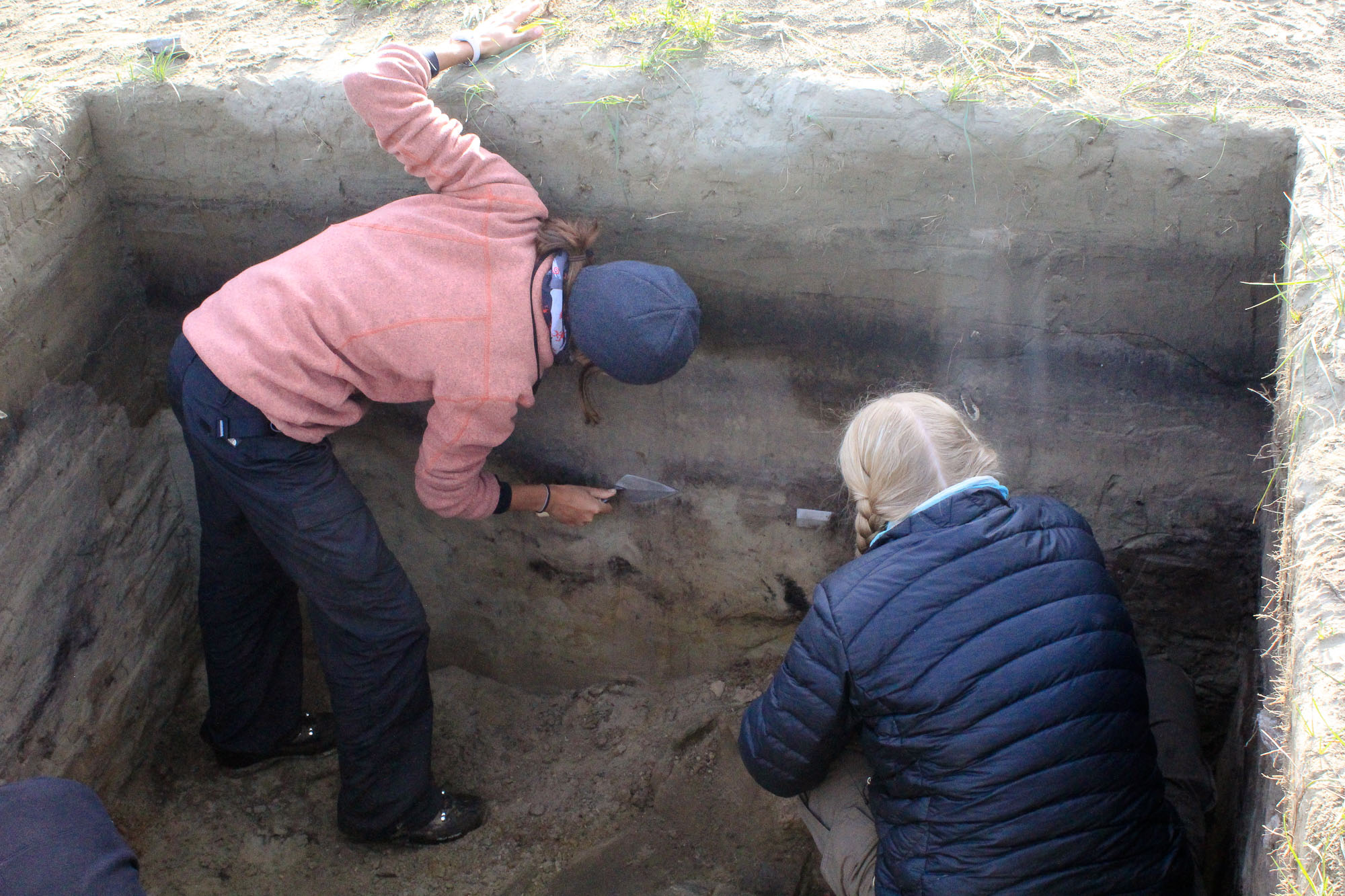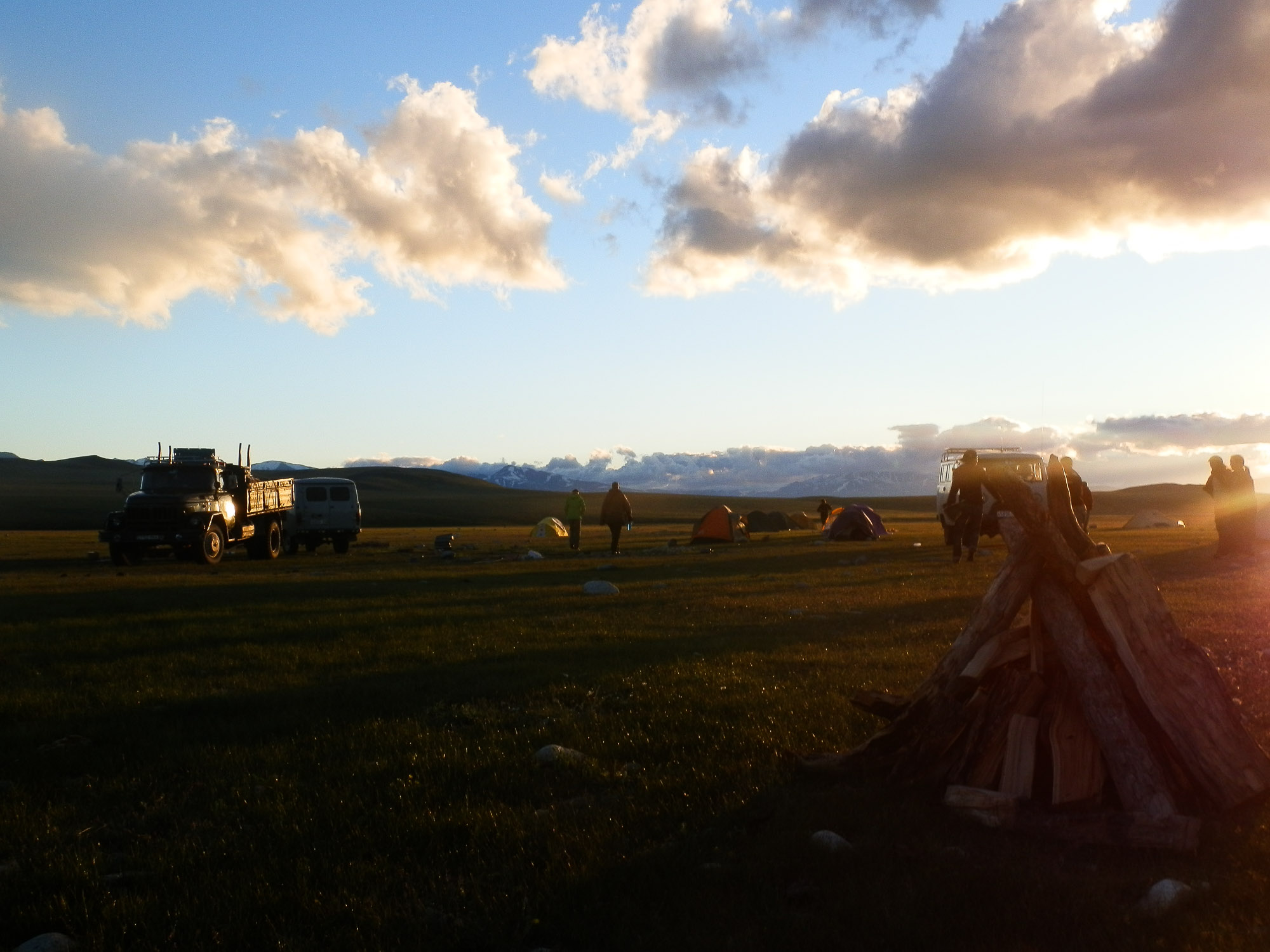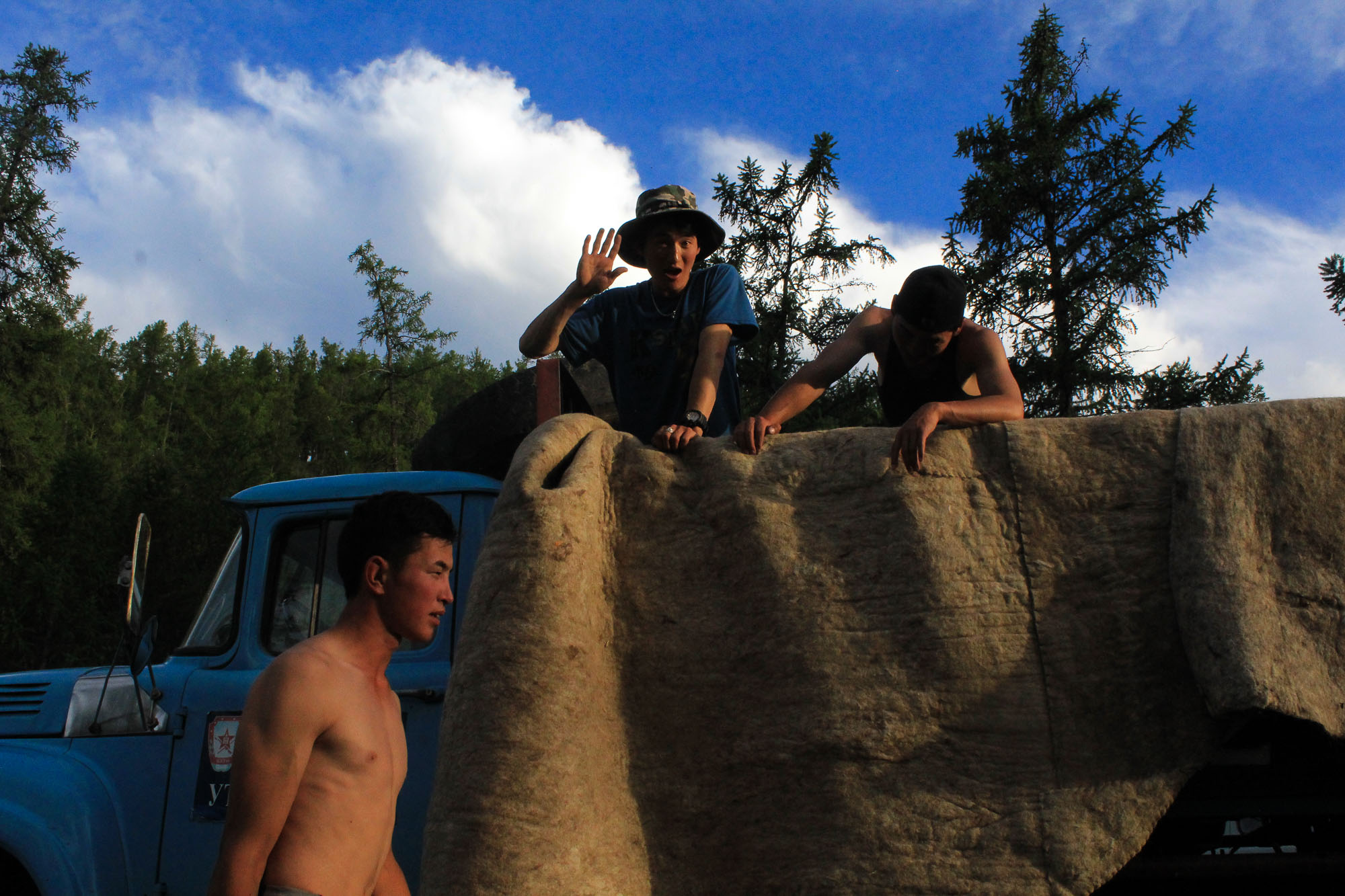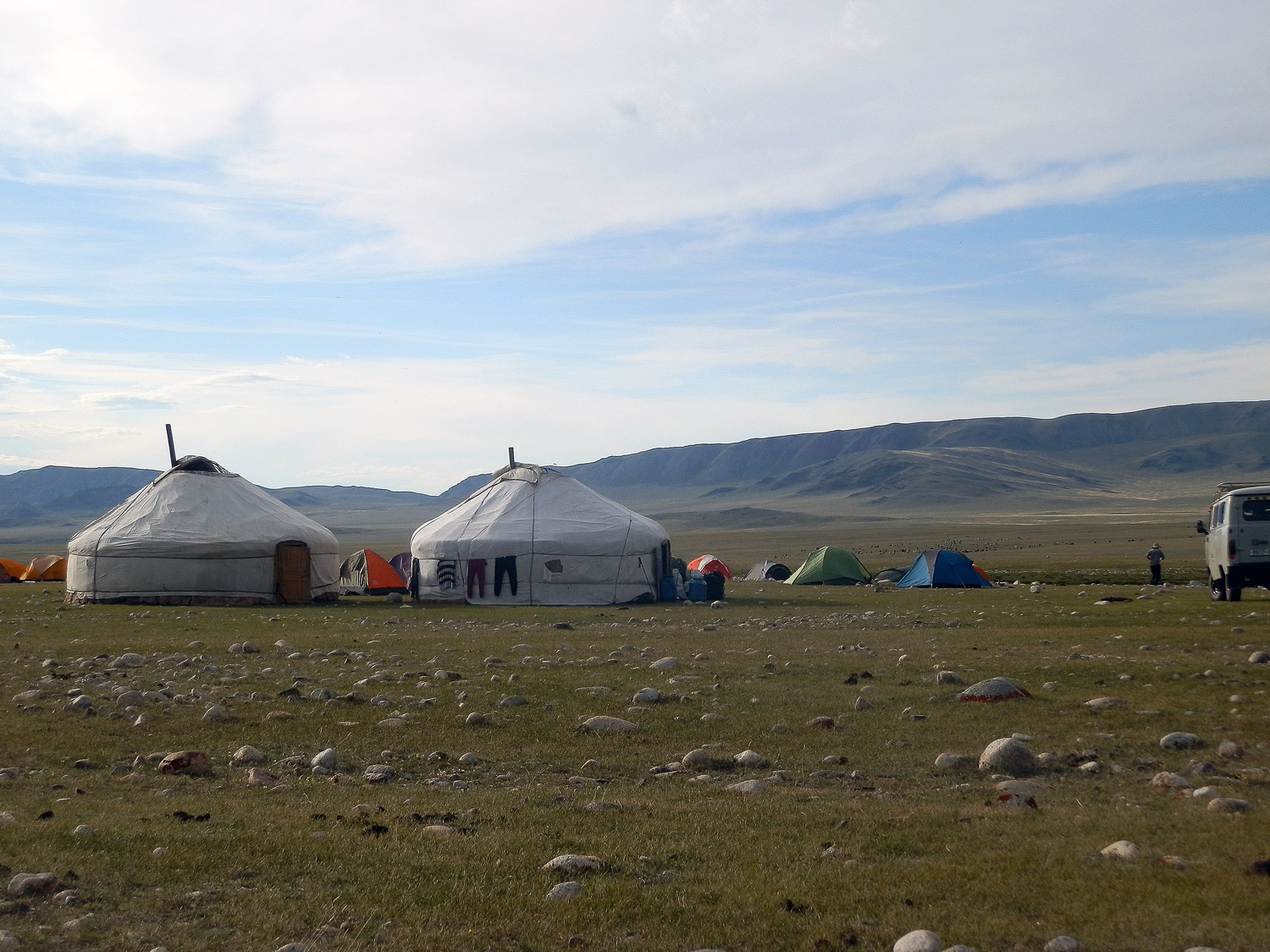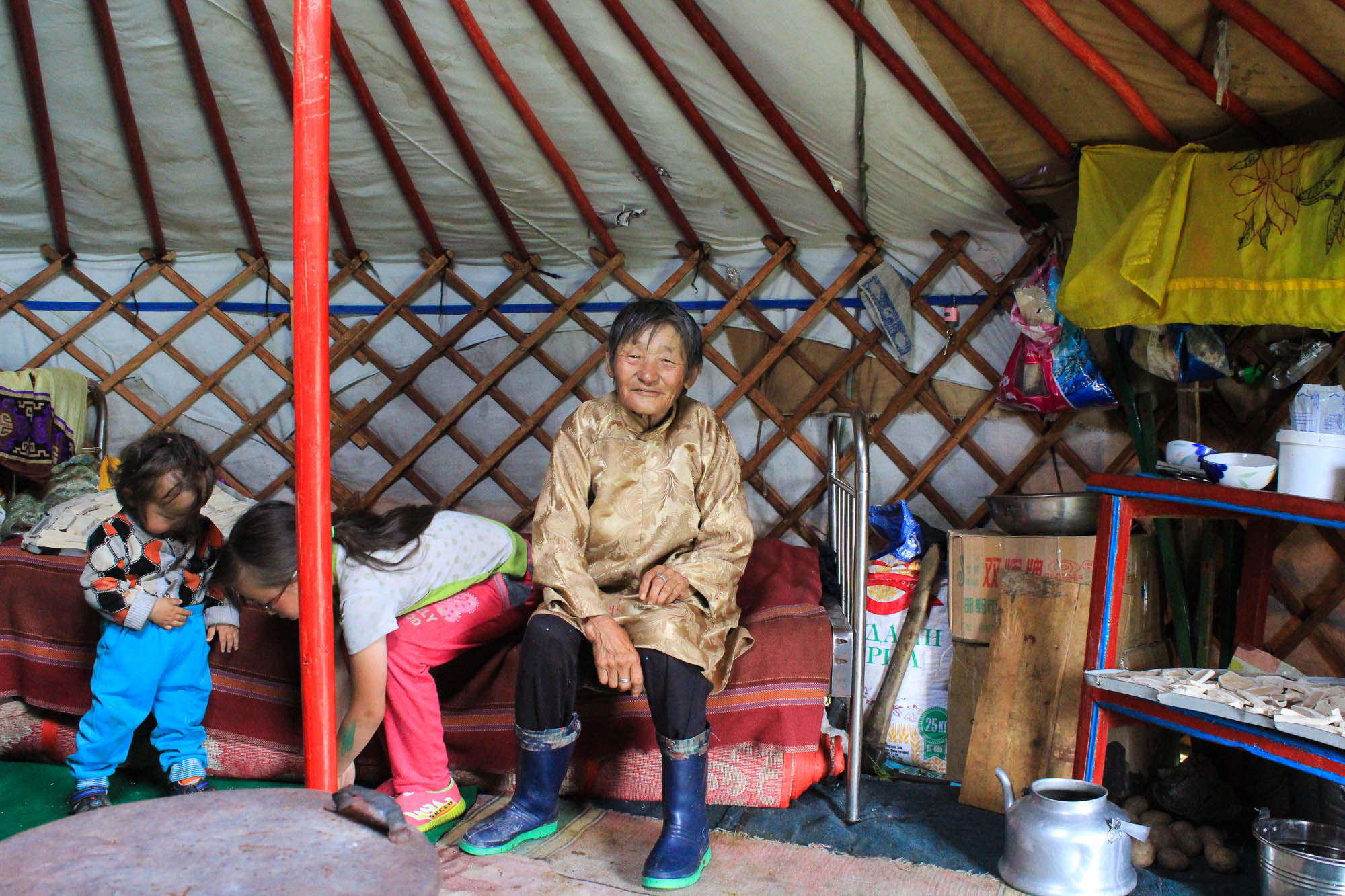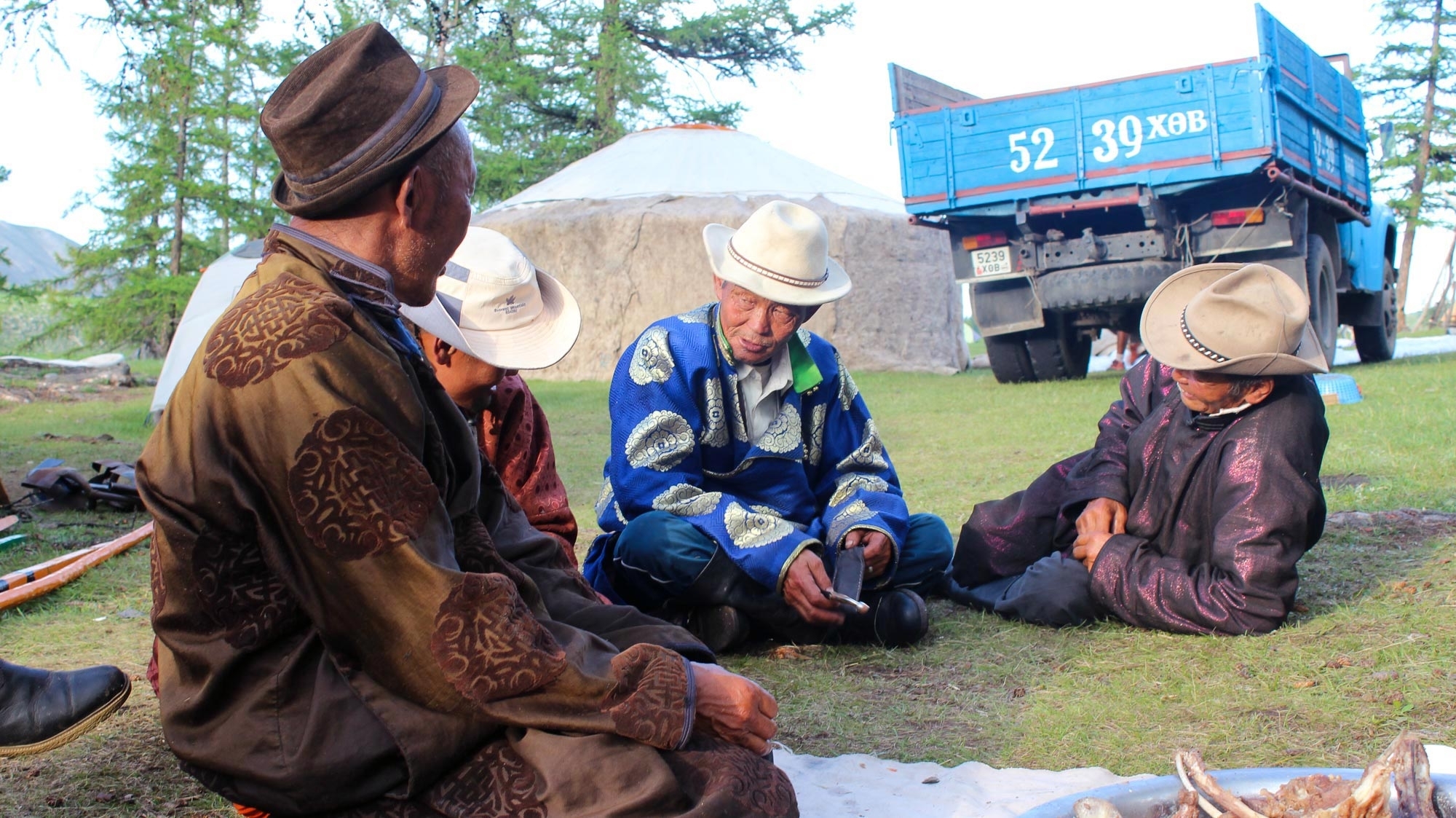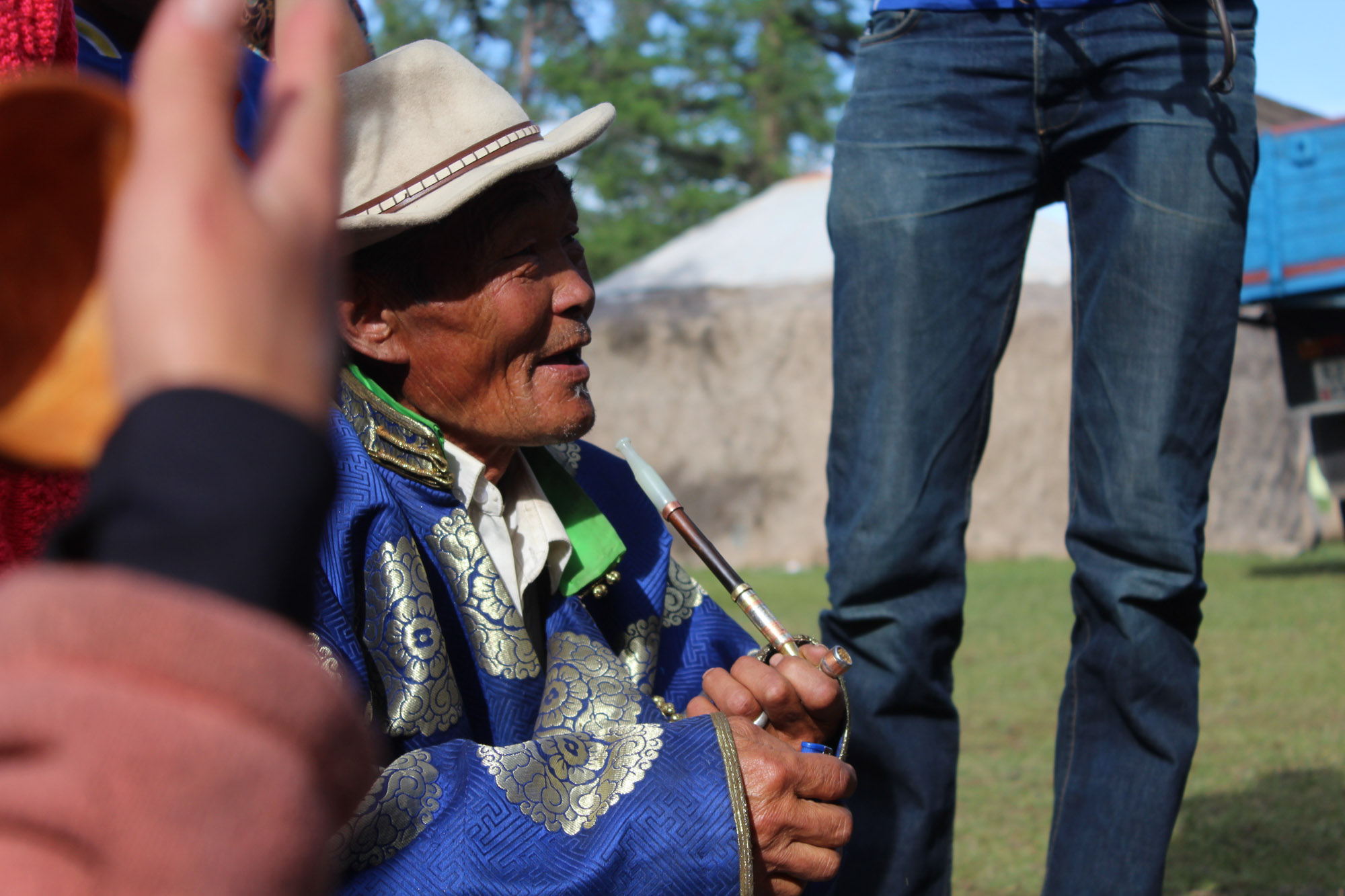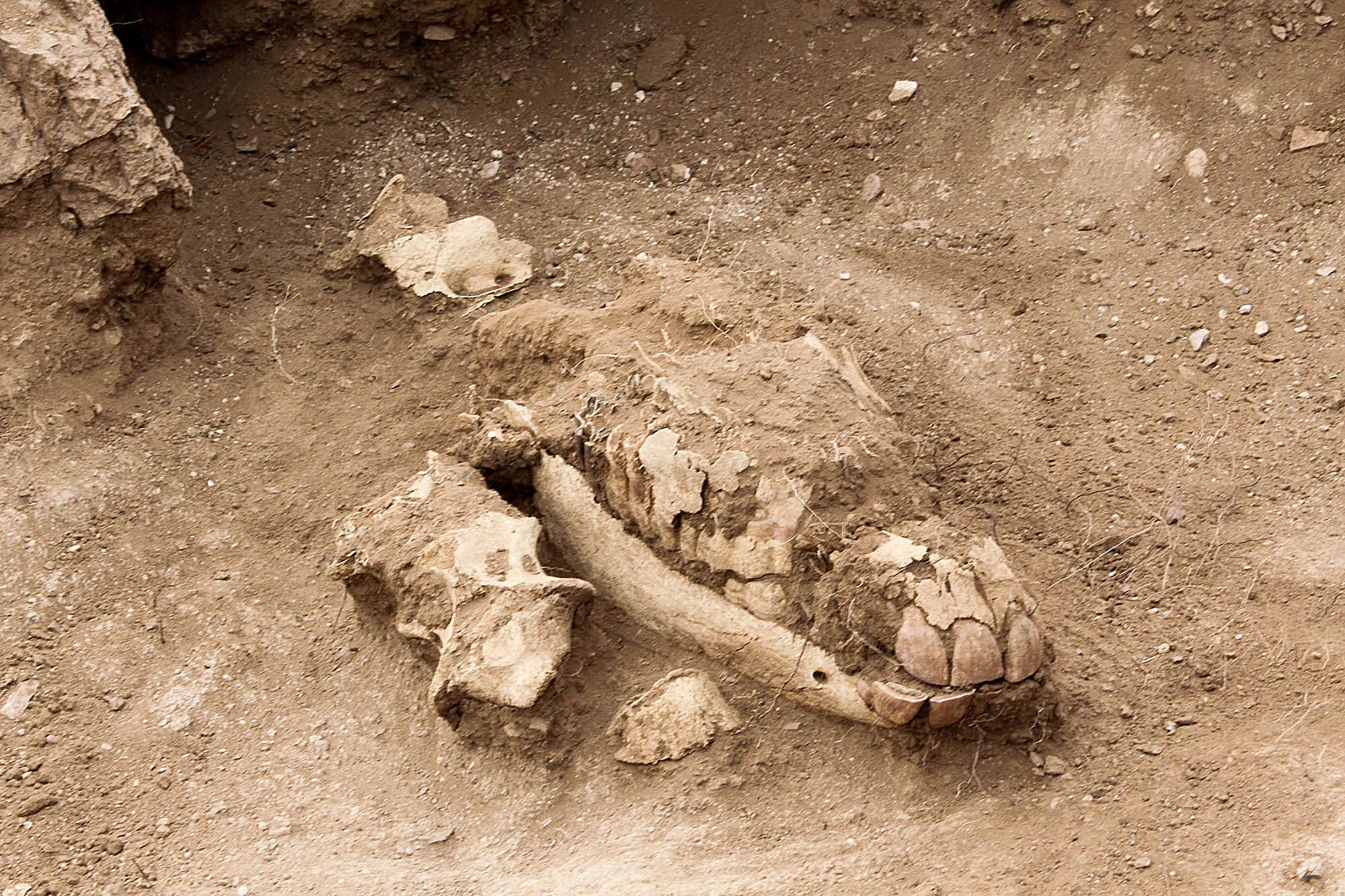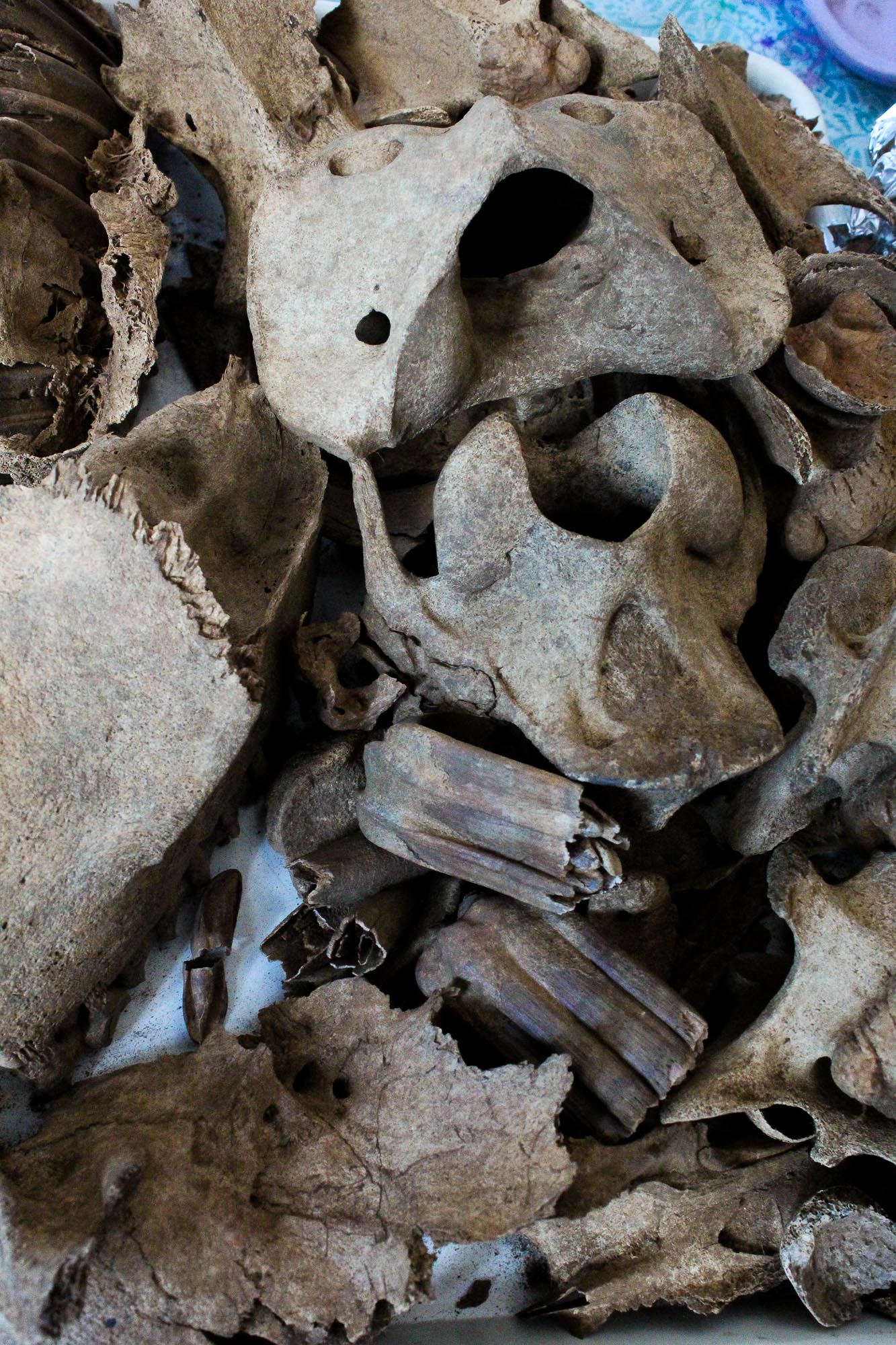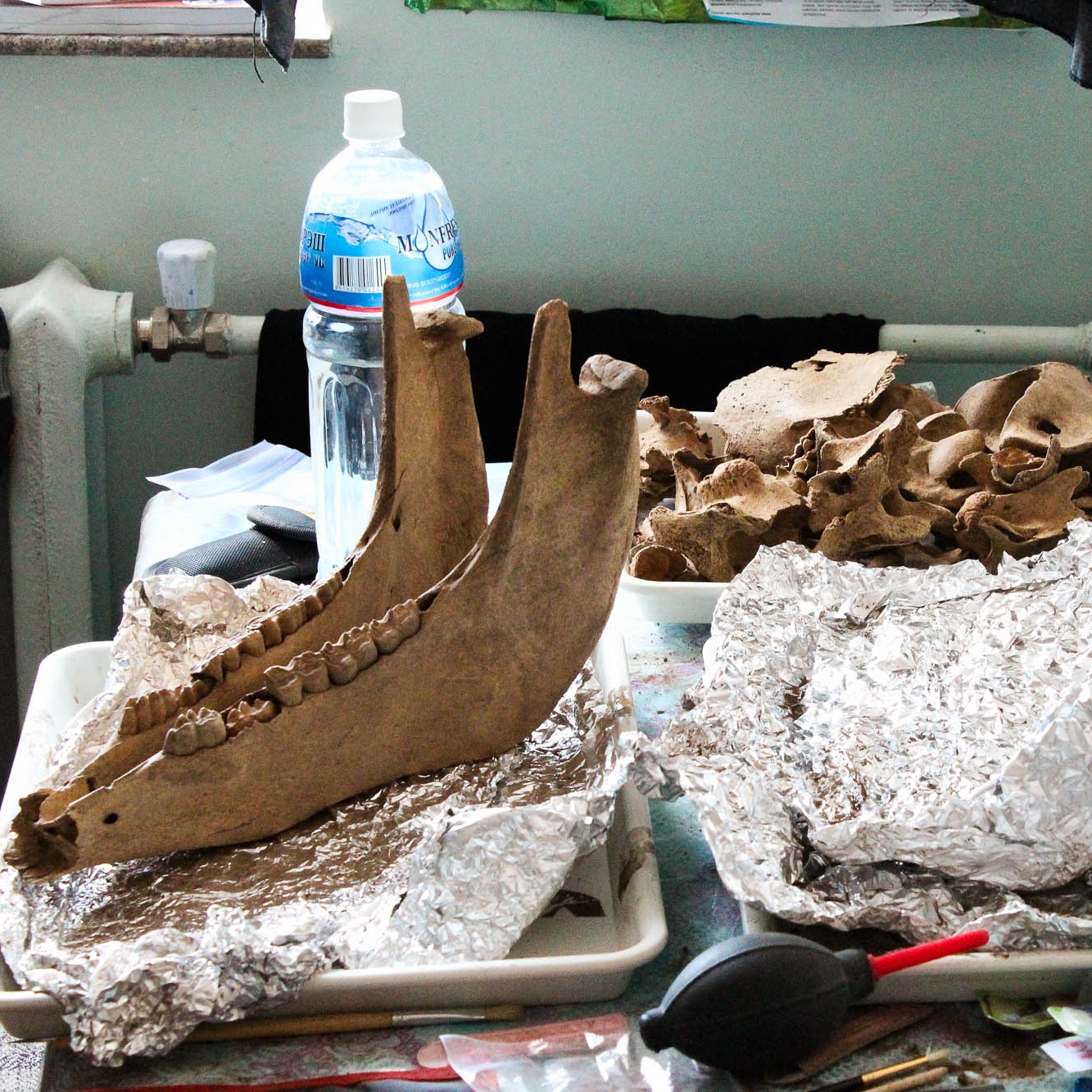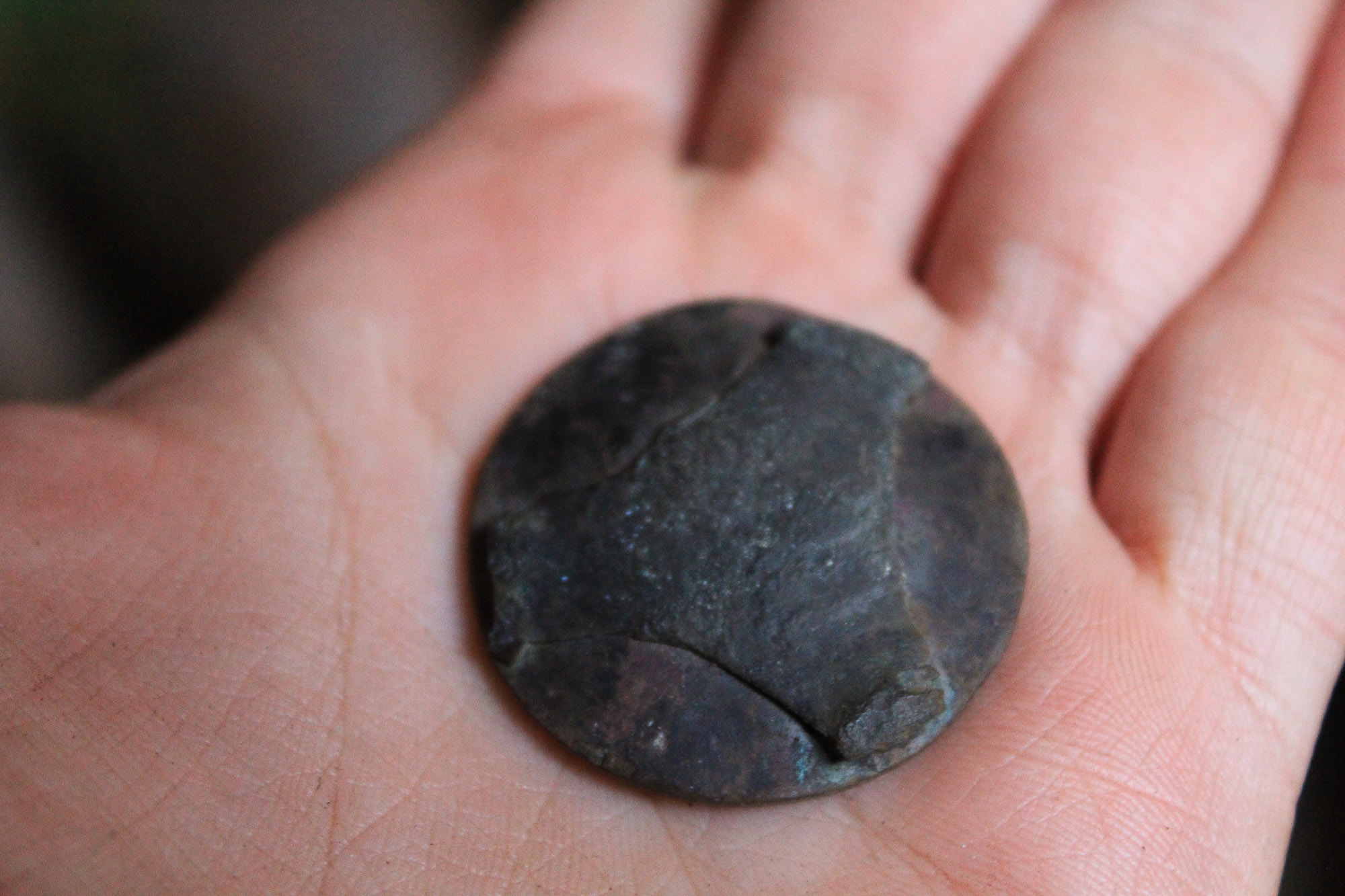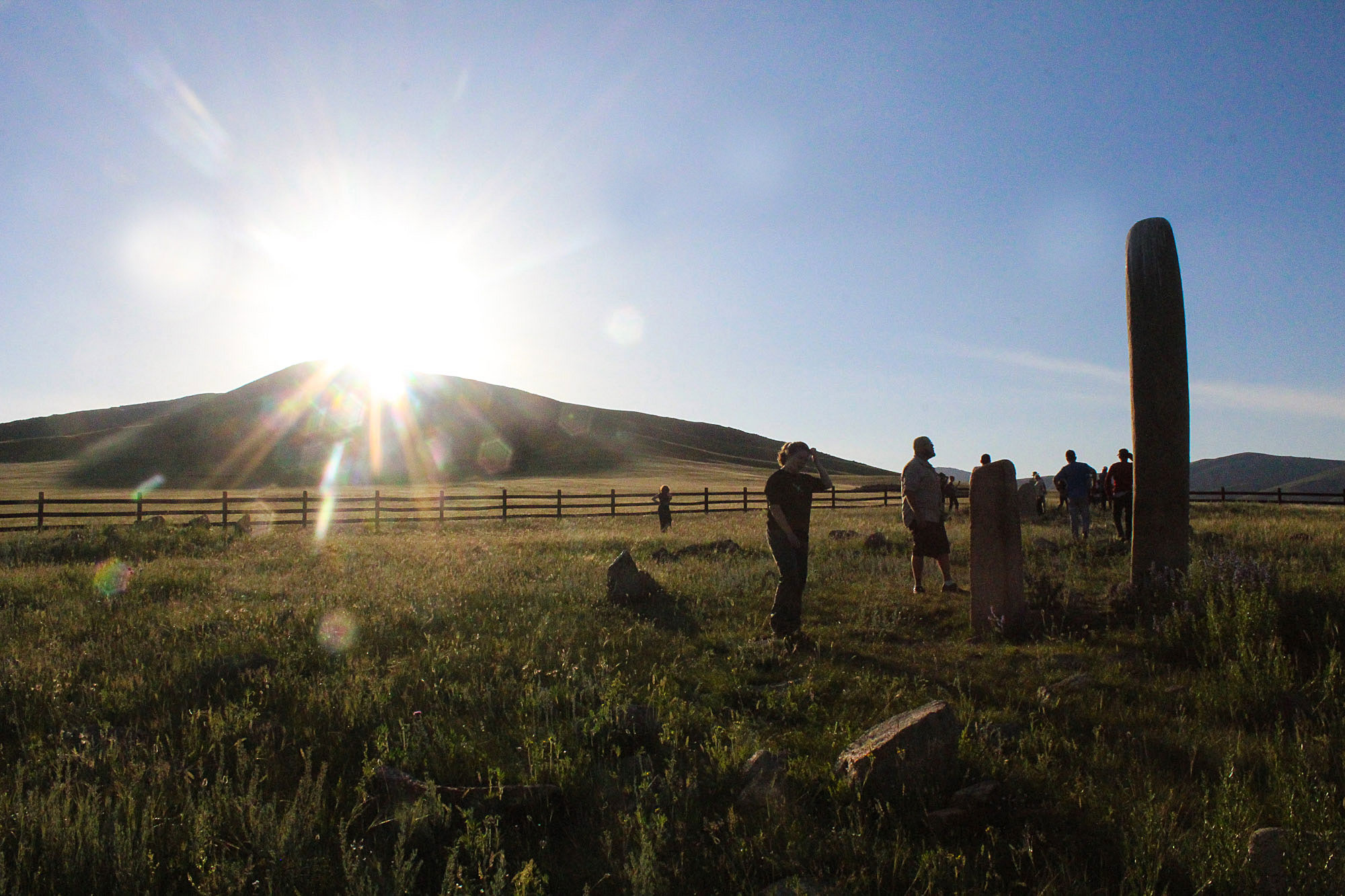‘Archeology is not about artefacts. It’s very much about the context.’

Archaeologist Lisa Randisi on archaeology as storytelling in the Mongolian Steppe
8 minute read / Nastasia Bassil
“As a general rule, archaeologists suck at communication,” says Lisa Randisi between two bites of cookie. Not Lisa. With a speciality in public archaeology from UCL, Lisa’s work has her digging out secrets from the National Army Museum’s dusty archive, trawling the Thames shore’s lost treasures and venturing into Mongolia’s most remote countryside. So it comes as no surprise that she always has more than one story in her bag.
“The other day, we went to a show in London where they were unwrapping a mummy. I was so excited because it was the first public unwrapping since the Victorian times when it was trendy at parties ... turned out the mummy was still alive. It was an actor!” Lisa’s a true believer in the power of storytelling, and even entertainment, to bring a place’s hidden histories to life. So we sit down at the Museum of London to talk about how archaeology can change the way we look at a place, from the discovery of a horseshoe under her parent’s house to finding one of world’s biggest viking sites under a Yorkshire car park.
Lisa, tell us about your background as an archaeologist – how has it shaped the work you do today?
My interest is in communicating stories. As a general rule, archaeologists suck at communication. Since the ‘70s, archaeology has very much been a specialist discipline, where you get people who are very academia-oriented, and archaeologists who write for archaeologists. This is slowly changing - we’re seeing more and more archaeology in the newspapers and on TV. But it’s still nowhere near as much as it used to be.
Of course there's a need for research.
—
But if research is only communicated to a tiny fragment of the population, there's not much point in doing it. There’s a lot that’s pretty exciting about archaeology, and there’s so little that makes it out there.
—
You’ve done a lot of excavations in Mongolia over the last few summers. What is that work about, and how is it connected to communicating archaeology and shaping place?
The latest place where I have worked in Mongolia was a four-day drive from the capital city, including three days off road — over hills, into streams. The teams that I have been working with there are international. You have a Mongolian and a foreign director, they work together to write and published a report. And unfortunately, that is generally all that happens. You do your research; then it gets put in the report, and no one ever bothers to read it because it’s written in academic jargon.
—
Yet the archaeological work that is happening in Mongolia is extremely relevant to the current situation of the country. There has been a big redefinition of what it means to be Mongolian over the past 15 to 20 years.
—
An enormous hand looms over the Genghis Khan Statue Complex. The exit onto the viewing platform is through his crotch! Since Mongolia became a democracy, Genghis Khan has become a new national hero.
How does it tie into the bigger narrative?
Because the National Museum has a monopoly on all the finds, the narrative is rarely changed. Whereas the archeology is relevant because there’s a redefinition of what it means to be Mongolian at the moment. The focus from the government is on rebuilding national identity after the Soviet and Manchu period. There’s a lot of issues regarding what Mongolia’s got to offer to the world. It’s been a self-sufficient nomadic pastoralist economy for most of its history. It’s on the global market now for the first time since the 1300’s. People who work in heritage understand that a big appeal of Mongolia globally is culture, and that’s something they can export to draw in tourism. But the result is that is marketed to tourists and few Mongolian people visit the archeology and history museum there. I interviewed a lot of professionals working in archeology this Summer. They all say “what we’re doing is building a puzzle. We dig out little pieces and add to this greater story of Mongolia.” But it’s ten months of work for five lines of a history book that no-one’s ever going to read.
Is it because of a local lack of interest in archaeology?
There's this misconception from archaeologists that local people in Mongolia are not interested in the history of the place. I've interviewed people about this, and when you ask them if they're interested in history, they will go, "No, I know nothing about history," because they think history is what they were taught in school: kings, queens, people from a long time ago, dates, timelines.
But the same people will come and visit the site when you're working - and they're like, "Cool, that came out of the ground, what is that?" People are curious about these things. They just don't equate it to that stuffy, academic idea of history that people in the cities might be more interested in. They're not concerned with a national identity. They care about their local community and they care about the landscape around them.
Could you use that narrative to its full potential?
Yes. For example, the future of herders in Mongolia at the moment is really uncertain. There is a lot of evidence in archaeology on how being a herder in a nomadic pastoral economy is very viable. The academics know it, the archaeologists know it. There’s a lot to support them and their way of life. But Mongolians themselves don’t know anything about it.
Singing is important in Mongolia. The horsemen sing to praise their horses.
Looking more broadly — is there a way that archaeology can be better communicated?
The kind of storytelling that is extremely place-relevant - and that really ties into a sense of self - can be better told as a sporadic thing, through events.
—
I think events are the future of heritage.
—
A couple of years ago I volunteered for the foreshore archaeology monitoring group, FROG. We set up tables packed full of artefacts that we found on the Thames foreshore. Loads of people came. They got to handle the objects. They got to go down to the foreshore and have look around and pick up things; they could go to people in yellow jackets who would tell them more about it. It was hugely successful. People were queuing to get to the table.
In London, when Prospero does excavations, you can't see them. Very occasionally there's a viewing platform but you can't really go in and ask people questions. It wouldn't kill Crossrail to have, on weekends, an archaeology interpreter with a table outside one of their sites, with some of the artefacts that have come out of it.
How can archaeology connect you to a place on a day-to-day level?
You can get little stories out of anything - and I think that's exciting. In the Museum of London, they recently showed a Victorian toothbrush that someone found in a house in London. More than 100 years ago, the tenants left because they couldn't pay the rent, and they left the toothbrush behind.
That’s a great and very relevant story now. When my parents read about it, they wanted to find out more about our house in London. They found some horseshoes that had been put in under the foundations when the house was built in the 1700s.
It takes very little to anchor you to a place, because you feel a connection with the people who were there before.
How long does it take to create a story out of archaeological findings?
It very much varies depending on which story you're telling. Especially with archaeology, because there are so many layers.
For example, the floor of the Thames foreshore is completely strewn with artefacts. I went down for five minutes the other day and I found a clay pipe from the 1600s. That’s a story in itself, as long as you have a little bit of background information. It has quite a small bowl, which means that it was an early example, because tobacco used to be expensive. They were made of clay because people would buy that pipe for that tobacco, use it a few times, and then chuck it into the Thames. That's a mini story in itself: something you have on the spot, and all you need is a little background. Then you can keep looking back and back, until you have this history of maritime trade….
If you want to tell a story about a place, it doesn't necessarily take a lot of time. It takes some ingenious thinking to embed the story within an environment in a way that's efficient and constructive.
—
Digging also adds an extra dimension to your storytelling, because you then have that layer which is rediscovering the objects.
—
Is there an archaeological discovery you can think of that completely changed the way people looked at a place, and inspired its future?
That is very tricky, but I'm going to have to say York.
In the late '70s or early '80s, a team of archaeologists was hired by a corporation who wanted to build a shopping centre there. They bought a carpark and decided they were going to excavate it. They found one of the biggest Viking sites ever discovered.
People passing the site every day would actually drop in and ask questions to the archaeologists. So a little hut was set up, where you could see some of the artefacts that had been found, with some photos and a bit of information. Eventually, locals got so excited about it that the team managed to convince the developer to add a museum to the shopping centre - on location, basically.
But York already had an archaeology museum and it was really dull. Also, the company contracted to do the museum didn't want to do a museum. They wanted to keep alive that spirit that animated all these people who would come to see the site when it was being excavated. They felt they were onto something – this little special spark.
And that was the birth of the Jorvic Viking Centre. To this day, it's a Viking theme park, effectively. It's one of the biggest archaeology and heritage attractions in the UK, if not in Europe.
Can museum’s do that too? Did the Museum of London change your perspective on London?It’s certainly built a connection. It's like knowing someone's life story: you feel closer to someone. The more you know about someone, the more you attached you feel. It's the same here but at the scale of the city.
What do you think we can learn from an archaeologist's point of view in placemaking?
Heritage should be taken into account, because it's part of the story of the place.
—
It's important to keep that storyline, which is completely tied to the identity of the place and of the community around it.
—
The Crossrail works are also destroying places in London that had a strong identity. Like Soho, the whole Tin Pan Alley area, that's gone – a very strong place in London with thousands of stories attached to it. If Crossrail actually incorporated elements of that history into the design of their new stations, it would make up for it – an awareness of the stories of those places.
To me it’s so automatic to link the past to the future to justify my work. It can be beneficial to give you a bigger picture of the story. At the end of the day as an archeologist you are using a lot of public money, so what you do has to have an impact, even if that impact is simply changing perceptions.

